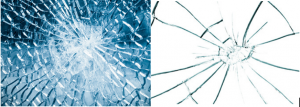Furniture Glossary: All the terms you need to know about the materials and finishing of furniture.
ABS (Acrylonitrile butadiene styrene) : A common thermoplastic polymer used to make light, rigid molded products.
Acrylic: A transparent thermoplastic homopolymer which is usually referred to as plexiglass, it can be used in lieu of bent glass to be a part of furniture or the lampshade of lighting. It is lighter than general glass, not easy to break, safe and easy to clean if it gets crashed into some pieces.
Bent Glass: Also called curved glass. It is widely-used to be shaped into a side table, coffee table, desk or dining table. As it is the clear glass, it is scratch-resistant but the broken pieces are sharp and not really safe for children.
Bi-Cast Leather: Also spelled as bi-cast bycast leather, which is not 100% leather. It is a kind of leather consisting of a polyurethane or vinyl and it is applied to the surface of a split hide to give a very uniform texture and color. Originally it is used for glossy shoes, but now widely-used in sofa, chair furniture.
Bonded Leather: Called reconstituted leather or blended leather. It is used as a kind of upholstery material and made by shredding leather scraps and leather fiber, then mixing it with bonding materials, which is a much more affordable than the true leather and easy to display the appearance of leather.
Color Temperature: Conventionally expressed in kelvins. It describes the light appearance provided by a light bulb. As for the light:
- Less than 2000K: dim light, close to candlelight
- 2000K-3000K: warm light with hints of yellow
- 3100K-4500K: bright white light
- 4600K-6500K: bright blue-white light (daylight = approx. 5000K)
- 6500K and up: bright bluish light
Leather: A strong and durable material for a furniture cover, which is made from an animal skins and hides that has been dyed.
LED: Stands for Light Emitting Diode. LED bulb is the most energy-efficient technology for home, which is a solid-state lighting which uses a semiconductor as a source of light.
MDF (Medium Density Fiberboard) : A high grade, composite wood product is made by breaking down hardwood or softwood residuals into wood fibres, and formed by applying high temperature and pressure to a combination of wood fibers, wax and resin. The premium MDF is featured with eco-friendly wood fibers and resin.
MDF is generally much stronger than particleboard and is an excellent core for wood veneer products. It sometimes performs better than solid wood since it can be shaped flexibly and adapted to different temperatures and humidities.
Microfiber: A synthetic fabric is typically made from polyester fibers. Microfiber is the great substitute for leather due to its durability, light weight and water-resistance characteristics and it is easy to print with many patterns.
Polyurethane (PU) : A plastic material in various forms. It is usually used as the surface of a fabric of furniture, carpets, which can show a leather look and make the product durable, affordable and comfortable.
Rattan : A type of natural vine-like palm can be found in tropical Asia and Africa. Its flexibility, durability and light weight make it widely-used in wicker woven furniture, especially for the outdoor space.
Tempered Glass : Also known as toughened glass, a type of safety glass with increased strength compared with normal glass. Tempering makes it quickly perform a heating and cooling process. It is rather safe after shattering into small granular chunks instead of smashing into sharp pieces and spreading everywhere. Tempered glass is commonly-used for oven doors, bathroom doors, and some tabletops of furniture.

Your idea is magnificent